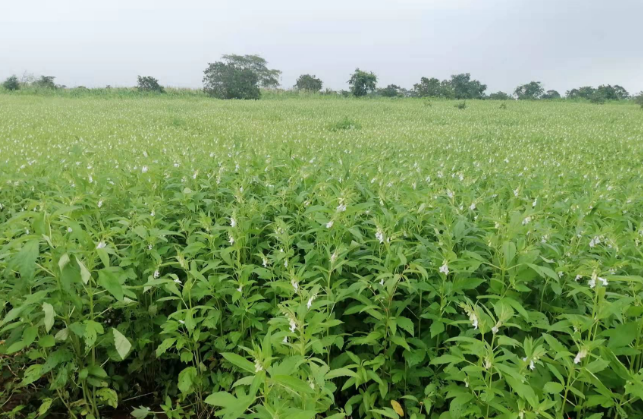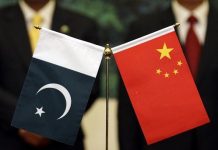BEIJING: In China, when people think of sesame, their first impression is rich oil or fragrant pastries. But in fact, this tiny seed could become a “chip” that leverage the upgrading of international industries.
“What many people don’t know is that sesame is one of China’s most imported crops, after soybeans. China imports 85 percent of our soybeans annually, as well as the proportion of sesame imports is similar. Currently, China’s total annual sesame demand is approximately 1.5 million tons, of which 300,000 tons are domestically produced, leaving the remaining 1.2 million tons imported. Not only that, consumption is increasing year by year. What do these statistics indicate? Seizing the Chinese market can bring endless opportunities,” after the signing of the China-Pakistan Memorandum of Understanding on sesame on September 5, Professor Yuan Guobao, Chairman of the Hubei Technical Market Association, introduced to China Economic Net in an interview.
The MoU is made between the University of Agriculture, Faisalabad (UAF), Oil Crop Research Institute-Chinese Academy of Agricultural Sciences, China (OCRI CAAS) and Hubei Province Lianfeng Overseas Agricultural Development Group Co., Ltd. (Hubei Lianfeng Group).
OCRI-CAAS, UAF and Hubei Lianfeng Group agree to jointly develop high-quality, stress-resistant sesame varieties, with key areas include the evaluation of sesame genetic resources and the discovery of high-quality materials, the identification of genes or quantitative trait loci (QTLs) related to sesame yield and stress resistance, and the training of related talents.
The steady demand for sesame in China, driven by its use in traditional food products and oil extraction, has created lucrative opportunities for Pakistani farmers and exporters. Recognizing this huge demand, Pakistan has actively promoted sesame exports to China. To further expand the market, closer industrial cooperation to bring about higher output and quality is also a necessary prerequisite.
“After ten years of research, it goes without saying that if China’s excellent sesame varieties are able to take root on a large scale in Pakistan, it will undoubtedly bring a win-win situation for both countries. First, sesame is a very drought-tolerant crop, which is well suited to growing in Pakistan’s relatively water-scarce environment.
Next, sesame has a relatively short growing period to match precious land resources in Pakistan. Crops with a short growing period make it convenient for them to plant other crops after harvest, further improving efficiency,” Yuan analyzed.
The reporter learned that Chinese researchers will soon bring some sesame varieties that have been bred locally and planted on a large scale to Pakistan for further screening to ensure the best germplasm.
“Although both are located in the Northern Hemisphere, Pakistan’s latitude is lower than China’s. Therefore, we need to adapt to local conditions and follow natural laws. We have selected some sesame varieties with good adaptability from southern China for trial planting,” Yuan added, “furthermore, local farmers sow sesame by hand, which makes it difficult to evenly distribute the seeds.
We could promote the use of specialized sesame seeding machines to greatly improve sowing efficiency. Besides, our specialized sesame herbicides are going to reduce the labor intensity of local farmers.
Pakistan has emerged as a major player in the global sesame trade, with exports to China skyrocketing in recent years. Over the past five years, Pakistan’s sesame production has surged by an impressive 455%, reaching an annual output of 1.119 million tons, while exports have grown by 327% to 760,000 tons, generating $1.073 billion in revenue. –Agencies






